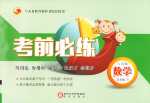题目内容
"Hey, don't read in the hallway. Your eyesight will be damaged." You must have heard such warnings many times. Don’t read in dim (暗的)light! This is one of the “pearls of wisdom” that are supposed to help us live a healthy life. Such common beliefs, however, lack scientific basis, according to a paper published recently in the British Medical Journal.
Do you believe in the following everyday wisdom?
Reading in dim light ruins your eyesight.
In dim light, you might blink (眨眼) more, feel discomfort from drying and have trouble focusing. But the majority of eye experts believe it is unlikely to do any permanent damage.
We must drink at least eight glasses of water a day
In 1945, the Nutrition Council in US suggested that people need to consume 2.5 litres of water a day. But the water contained in food, particularly fruit and vegetables, as well as in milk, juice and soft drinks, also counts towards the total.
We only use 10 percent of our brains.
This myth arose as early as 1907. People have long argued about our power of self-improvement and our brains’ potential abilities. But detailed imaging shows that no area of the brain is silent or inactive.
Shaving your legs causes hair to grow black faster and thicker.
This theory is also illusion. Shaving has no effect on the thickness or rate of hair growth,
studies say. Just over time, the edge of hair gets worn away and thus the edge of long hair becomes finer (更细). So hair that is newly grown gives the impression of darkness.
1.What does the paper say about some common beliefs?
A.They are pearls of wisdom B.They help us live in healthy ways
C.They are well-known theories. D.They do not have scientific basis.
2.Which of the following is true according to the passage ?
A.Reading in dim light does harm to one’s eyes.
B.People need a total of 2.5 litres of water a day
C.People use 90 percent of their brains.
D.Shaving your legs will give you thicker hair.
3.This passage is most likely to be found in __________ ?
A.a newspaper B.a science fiction
C.a biology textbook D.a medical book
1.D
2.B
3.A
【解析】
试题分析:文章介绍了七个医学常识的误区,进行一一的纠正
1.细节题:从第一段的句子:Such common beliefs, however, lack scientific basis, according to a paper published recently in the British Medical Journal.
可知一些大家普遍相信的话没有科学根据。选D
2.细节题:从第三段的句子:the Nutrition Council in US suggested that people need to consume 2.5 litres of water a day.可知这句话是对的。选B
3.这篇文章介绍了一些人们日常生活的误区和生活密切相关,应该是报纸上的,选A
考点:考查生活类短文
点评:本文集中考查了细节题,要求考生仔细阅读全文,做好相应的标志,以提高阅读的效率和速度

 考前必练系列答案
考前必练系列答案If you were to walk up to Arthur Bonnet and say, "Hey, Butterfly Man," his face would break into a smile. The title suits him. And he loves it.
Arthur Bonnet works with the Palos Verdes blue butterfly, once thought to have died out. Today the butterfly is coming back thanks to him. But years ago if you'd told him this was what he'd be doing someday, he would have laughed, "You're crazy." As a boy, he used to be a little tough guy on the streets". At age thirteen, he was caught by police stealing. At eighteen, he landed in prison for shooting a man.
"I knew it had hurt my mom," Bonner said after he got out of prison. "So I told myself I would not put my mom through that pain again."
One day he met Professor Mattoni, who was working to rebuild the habitat for an endangered butterfly called E1 Segundo blue.
"I saw the sign 'Butterfly Habitat' and asked, 'How can you have a habitat when the butterflies can just fly away?'" Bonner recalls. "Dr. Mattoni laughed and handed me a magnifying glass (放大镜) , "Look at the leaves. ' I could see all these caterpillars (蝴蝶的幼虫) on the plant. Dr Mattoni explained, 'Without the plant, there are no butterflies. '"
Weeks later, Bonner received a call from Dr. Mattoni, who told him there was a butterfly that needed help. That was how he met the Palos Verdes blue. Since then he's been working for four years to help bring the butterfly back. He grows astragals, the only plant the butterfly eats. He collects butterflies and brings them into a lab to lay eggs. Then he puts new butterflies into the habitat.
The butterfly's population, once almost zero, is now up to 900. For their work, Bonner and Dr. Mattoni received lots of awards. But for Bonnet, he earned something more: he turned his life around.
For six years now Bonnet has kept his promise to stay out of prison. While he’s bringing back the Palos Verdes blue, the butterfly has helped bring him back, too.
1.When he was young, Arthur Bonner
|
A.broke the law and ended up in prison |
|
B.was fond of shooting and hurt his morn |
|
C.often offered necessary help to other people |
|
D.often caught butterflies and took them home |
2.Bonner came to know the Palos Verdes blue after he ______.
|
A.found the butterfly had died out |
|
B.won many prizes from his professor |
|
C.met Dr. Mattoni, a professor of biology |
|
D.collected butterflies and put them into a lab |
3. From the last sentence of the text, we learn that raising butterflies has ______
|
A.made Bonner famous |
B.changed Bonner's life |
|
C.brought Bonner wealth |
D.enriched Bonner's knowledge |
4. Which of the following would be the best title for the text?
|
A.A Promise to Morn |
B.A Man Saved by Butterflies |
|
C.A Story of Butterflies |
D.A Job Offered by Dr. Mattoni |